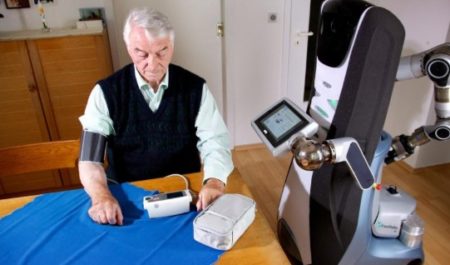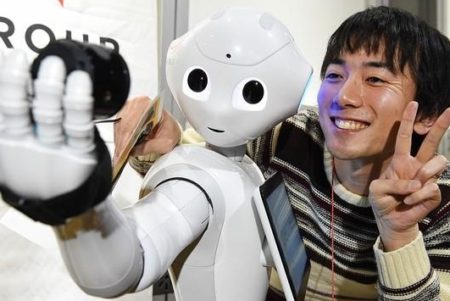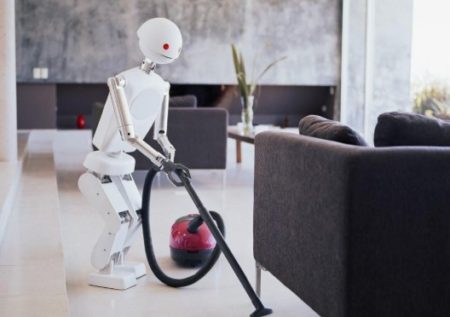October 9, 2019 – Please welcome Heman Thuranira with his first guest contribution to 21stcentech.com. Heman provides SEO content writing services to businesses. You can learn more about him and the link provided here. In his article, Heman describes how elder care in the near future will undoubtedly use robots. The example, of course, can be seen today in Japan where a combination of an aging population and a fascination with robotics has led to a convergence between the two. Enjoy the read and, as always, your comments are welcome.
The future of home elderly care is robotics state a number of futurists who in looking at Japan and other countries are seeing an increase in the latter’s use to assist the former’s needs.
Over the past few years, in countries like Germany, the United States, Korea, Japan, Singapore, and Sweden robots are becoming more visible in the workforce. For example, the U.S. reports having 200 robots per 10,000 employees. Germany has 300 robots per 10,000 in comparison. The numbers are even higher in Korea, where there are 710 robots per 10,000 employees. Most of these are industrial robots designed for manufacturing and service operations.
But there is another area where robots are making their way, and that is elder care. Where older adults are unable to be totally independent, the need for an assistant or helper to be available is inspiring robot designers to come up with solutions. In Japan where the country’s aging population is leading to a lack of human resources to deploy to elder care, robots are filling the niche. It is an interesting phenomenon with robots taking on many assignments formerly done by human workers.
Robots Provide Healthcare
In as much as human assistants may be present, sometimes they cannot attend to everyone’s needs. Enter the Care-o-bot, a robot worker to fill the gap. Care-o-bot is a one-of-a-kind artificial intelligence (AI) assistant capable of helping the elderly in numerous ways. It can cut toenails, fetch water, and even do household chores. I know sometimes it is difficult for an older person to get up from a seat to answer a door. But don’t worry. Care-o-bot can do that for you.
Care-o-bot is a sign of things to come as various robots enter the healthcare market. Already in use are robots like CyberKnife and DaVinci, both becoming a more common sight in hospital surgical suites.
In a recent Marketwatch report, its forecasted the value of the healthcare robotics market by 2023 will grow to $11.36 billion largely dominated by robots doing precision surgical procedures.
Robots Provide Companionship
Companionship from a robot seems a bit strange, but there is lots of evidence today to show just how much people in the presence of robots with animal or human physical characteristics feel comforted, particularly those who are alone.
Introducing Pepper, a unique French-developed robot designed to look very human. Pepper has a head, hands, and lower limbs attached to wheels at the bottom to facilitate its movements. The head contains four microphones, 3D cameras for eyes, and bumper sensors. Pepper can listen to you, walk with you, and even talk to you. In essence, Pepper can have a relationship with people connecting with them on a personal level.
Robots Strengthen Family Ties by Taking on Domestic Chores
Most of the time, when people arrive from work after a long day, they have little time to do the jobs required to maintain a home, let alone have the time to talk to an older member of the family that may be living with them. Domestic robots, however, represent a future where the chores of daily living can be put aside and given to machines whether using a robot vacuum cleaner, like the iRobot Roomba. Developers keep on thinking of new ways robots can become domestics. Often, these efforts end up in technologies that fail. For example consider the Japanese company Seven Dreamers which created the Laundroid, a clothes-folding robot. It turns out that clothes-folding wasn’t what people wanted in a robot. But there are certainly many other chores for robots in the future to do from washing floors to mowing lawns. With smart machines today and in our near future it should free up time for conversation and care, improving and strengthening family interaction whether with children or the elderly in the home. To learn more about robots in the home go to RobotsInMyHome.com.
Conclusion
By 2024 the latest forecasts show that the value of the in-home care robotics industry will grow to $6.5 billion USD from the current $1.9 billion. This means that more of our home care duties will be in the hands of smart robotic devices. And even in the case of personal care, robots will supplement human caregivers in looking after the elderly. Indeed, artificial intelligence and robots are the way of the future for many seniors and families.











